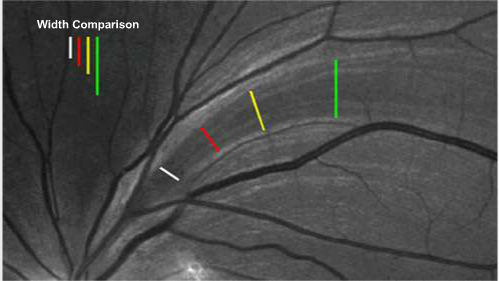Case 3: Optomap® plus with Resmax™ Green Separation Image OS

A true RNFL defect tapers as it approaches the optic disc. Such real RNFL defects are often very difficult to observe when in close proximity to the disc such as in this case. There are at least 2 reasons for the apparent disappearance of the RNFL: 1) The RNFL defect may be hidden at or near retinal blood vessels. 2) The more peripheral RNFL runs deep within the entire RNFL and intermingles somewhat with RNFL bundles from the posterior pole which run in the more superficial layer of the RNFL.3,4 Hence. at or near the disc, the RNFL bundles that are easy to observe are the more superficial ones from the posterior pole and are closest to the ophthalmoscopic view of the observer. If these fibers are normal, the underlying RNFL defect may be obscured.



